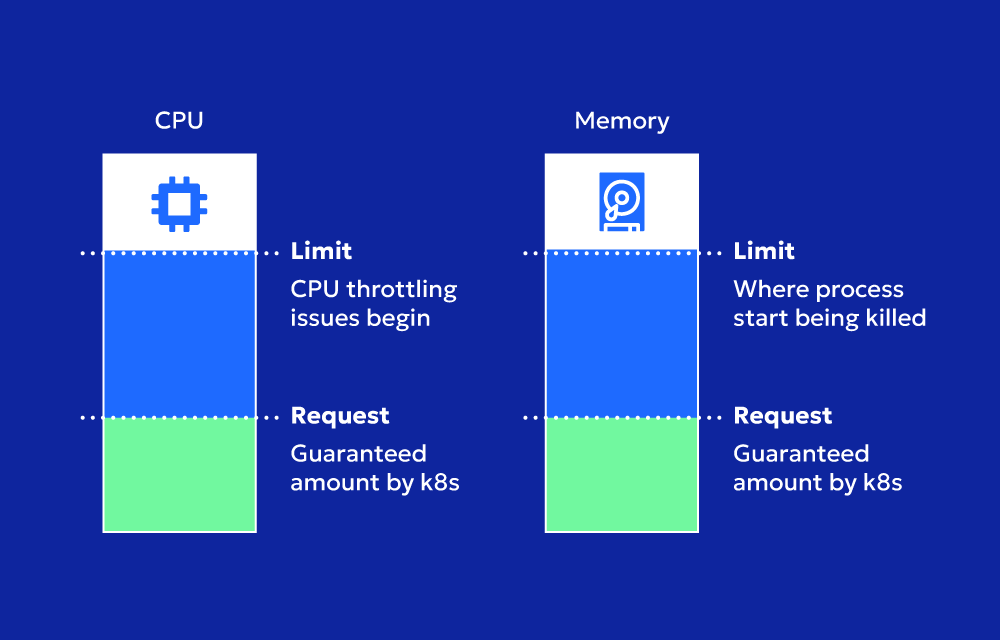Types of Storage Limits in Kubernetes
Ephemeral Storage Limits:
Ephemeral storage is temporary storage for a pod, used for operations like caching, logs, or intermediate data.Kubernetes allows you to define ephemeral storage requests (minimum guaranteed storage) and limits (maximum storage a pod can consume).Configured in the pod’s resource specifications under resources.limits.ephemeral-storage.
Example:
resources: requests: ephemeral-storage: "1Gi" limits: ephemeral-storage: "2Gi"
Persistent Volume (PV) Limits:
- Persistent Volumes are used for long-term storage, such as databases or user data.Storage limits depend on the size of the Persistent Volume Claim (PVC) bound to the pod. PVCs specify the required storage size, and Kubernetes ensures that pods cannot consume more than the allocated storage.
apiVersion: v1 kind: PersistentVolumeClaim metadata: name: my-pvc spec: resources: requests: storage: "5Gi"
Quota-Based Limits:
- ResourceQuotas can restrict the total storage a namespace can consume, both for ephemeral storage and PVCs. Useful in multi-tenant clusters to prevent a single namespace from monopolizing storage resources.
apiVersion: v1 kind: ResourceQuota metadata: name: storage-quota spec: hard: requests.storage: "100Gi" limits.ephemeral-storage: "10Gi"
How it Works
- Enforcement:
- Kubernetes enforces ephemeral storage limits at the pod level, terminating pods that exceed their defined limits.
- Persistent storage is constrained by the size of the PVC bound to the pod.
- Dynamic Provisioning:
- When PVCs request storage, dynamic provisioning automatically creates Persistent Volumes if a suitable storage class is available.
- Monitoring and Alerts:
- Kubernetes doesn’t automatically alert users about nearing or exceeding storage limits, so monitoring tools like Prometheus or Grafana are often used.
Why Are Storage Limits Important?
- Resource Management: Ensures fair distribution of storage across workloads.
- Cluster Stability: Prevents a single pod from exhausting storage resources, avoiding disruptions to other workloads.
- Cost Optimization: Helps control overuse of expensive storage resources in cloud environments.
- Application Performance: Guarantees minimum storage availability for critical applications.
Disadvantages
- Monitoring: It’s essential to monitor storage usage actively to avoid application crashes due to exceeded limits.
- Configuration Complexity: Misconfigured limits can lead to underutilization or unplanned resource contention.
- Dynamic Needs: Workloads with variable storage requirements can struggle to stay within predefined limits.



